Deluge Valve Leakage: UL-260 vs. ANSI/FCI 70-2
From an engineering point of view, almost all valves leak…
Did You Update BERMAD Connect Already? Check It Out
Update BERMAD Connect Today! Check It Out
BERMAD > Knowledge Center > Blog > The NFPA 13, UL, FM and Manufacturer Requirements for Pressure Relief Valves Downstream of Installed Pressure Reducing Valves

The design of fire protection systems is a complicated process that requires an integrated approach and a high level of expertise. System designers and engineers need to take a large number of factors into account while also understanding and complying with stringent local, regional, and international standards.
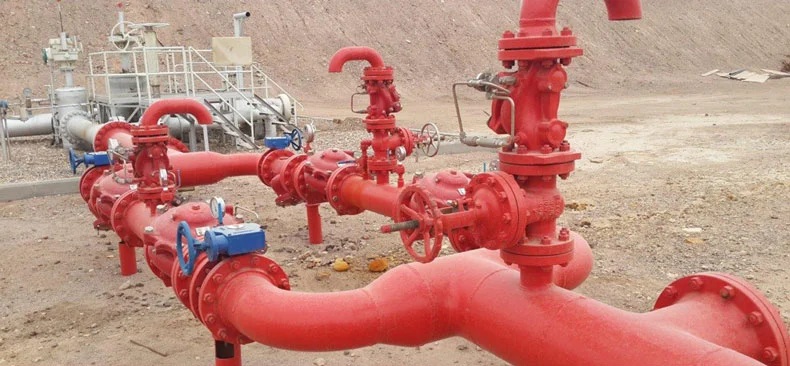
In this blog post, we will be discussing one of the components in these systems – for the Installation of Sprinkler Systems, UL and FM standards, and manufacturer recommendations, a pressure relief valve is required at the outlet, downstream of all installed pressure reducing valves, as part of the pressure regulating equipment in fire protection systems.
Pressure reducing valves are used to protect pressure-sensitive piping, instrumentation, and devices in fire protection systems against overpressure conditions downstream. In normal conditions, they perform this function well. However, sometimes in exceptional hydraulic scenarios, the pressure reducing valve is momentarily unable to maintain the set outlet pressure.
There are a few common causes for overpressure events related to pressure reducing valves:
While these events are few and far between, they do happen and the system needs to be prepared in order to prevent overpressure conditions when they occur. For these reasons, it is accepted standard practice and authorities require that a quick acting pressure relief valve be installed downstream of the pressure reducing valve as a safeguard against any inadvertent pressure rises downstream.
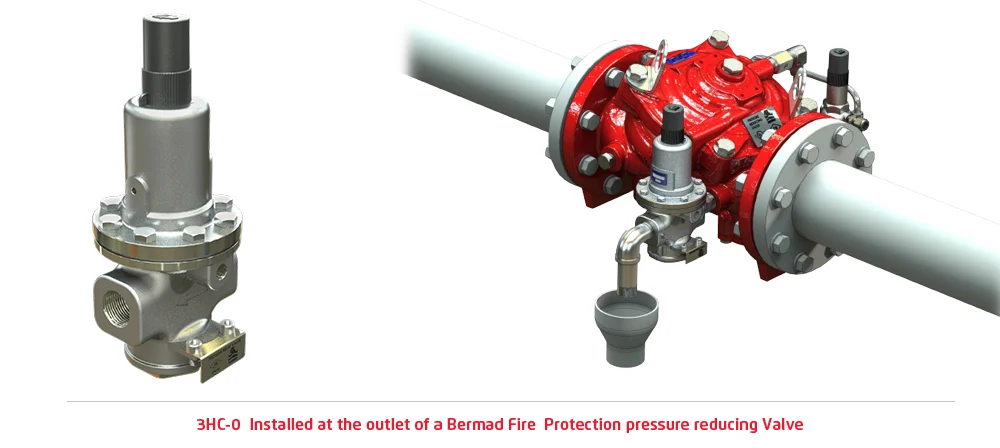
Pressure Relief valves are safety devices that are designed to quickly relieve overpressure in a fire protection system. Pressure relief valves are designed to open at a preset pressure threshold to drain the excess water pressure to the atmosphere or to a sump. Once the excess water pressure has been released and the line pressure drops to below the threshold once again, the relief valve returns to seal drip tight.
When selecting pressure relief valves for fire protection systems, it’s important to take the following factors into account:
Minimum Recommended Relief Valve Sizing Table for Pressure Reducing Valves
| Pressure Reducing Valve or Line Size in. (mm) | 1.5” (40) | 2″ (50) | 2.5″ (65) | 3” (80) | 4” (100) | 6” (150) | 8” (200) | 10” (250) | 12” (300) | 14″ (350) | 16″ (400) |
| Recommended Relief Valve Size in. (mm) | 3/4″ (20) | 3/4″ (20) | 3/4″ (20) | 3/4″ (20) | 2″ (50) | 3″ (80) | 3″ (80) | 4″ (100) | 2 x 4″ (2×100) | 2 x 4″ (2×100) | 2 x 4″ (2×100) |
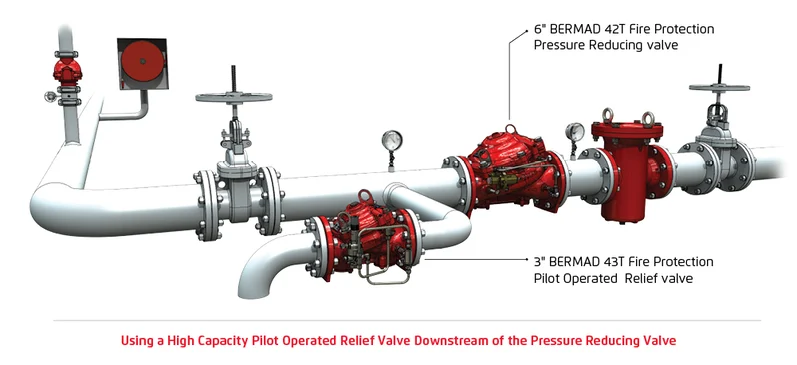
Also bear in mind that because direct-acting relief valves open directly against the main spring, their size and pressure range is limited. The reason for this is that with larger diameters and higher pressures, the spring becomes too big, cumbersome, and uneconomical.
BERMAD offers industry-proven relief valves that are designed specifically for advanced fire protection systems and comply with the latest industry standards. These solutions include the BERMAD FP-3HC-0 direct-acting relief valves, which are ideal for controlling pressure and preventing overpressure conditions in fire protection systems where lower relief flows suffice. They are available in a wide variety of corrosion-proof materials to suit diverse media and environmental conditions; and their robust design ensures a long and reliable service life.
The BERMAD FP-43T and FP-430-UF pilot-operated relief valves are elastomeric-type globe valves that are rolling-diaphragm actuated with an integral, solid and resilient seal. They are used for overpressure prevention for larger piping, water flow in fire protection systems; and are manufactured from various materials and coatings to suit all types of municipal, industrial, onshore and offshore specifications.
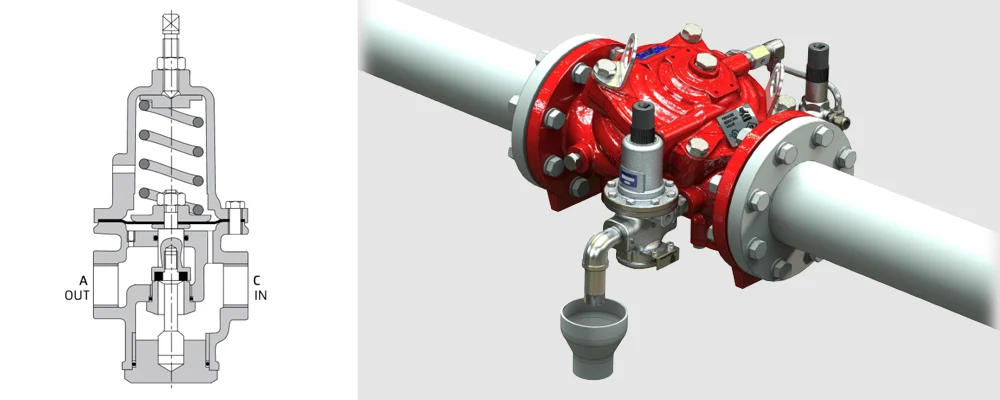
To find out more about our pressure relief valves and other fire-protection products, visit our website.
BERMAD engineers are available to provide you with expert guidance in fire protection applications and systems. To learn more, click here to contact a BERMAD representative in your region.
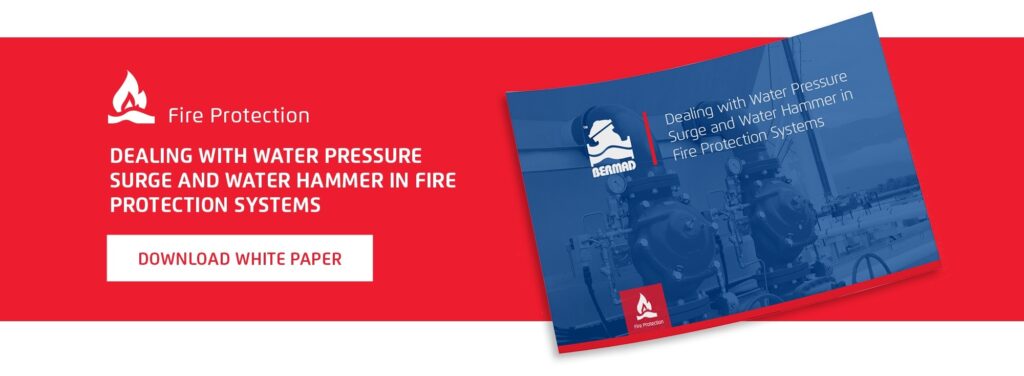

We got your email. Now, let’s make it personal...
